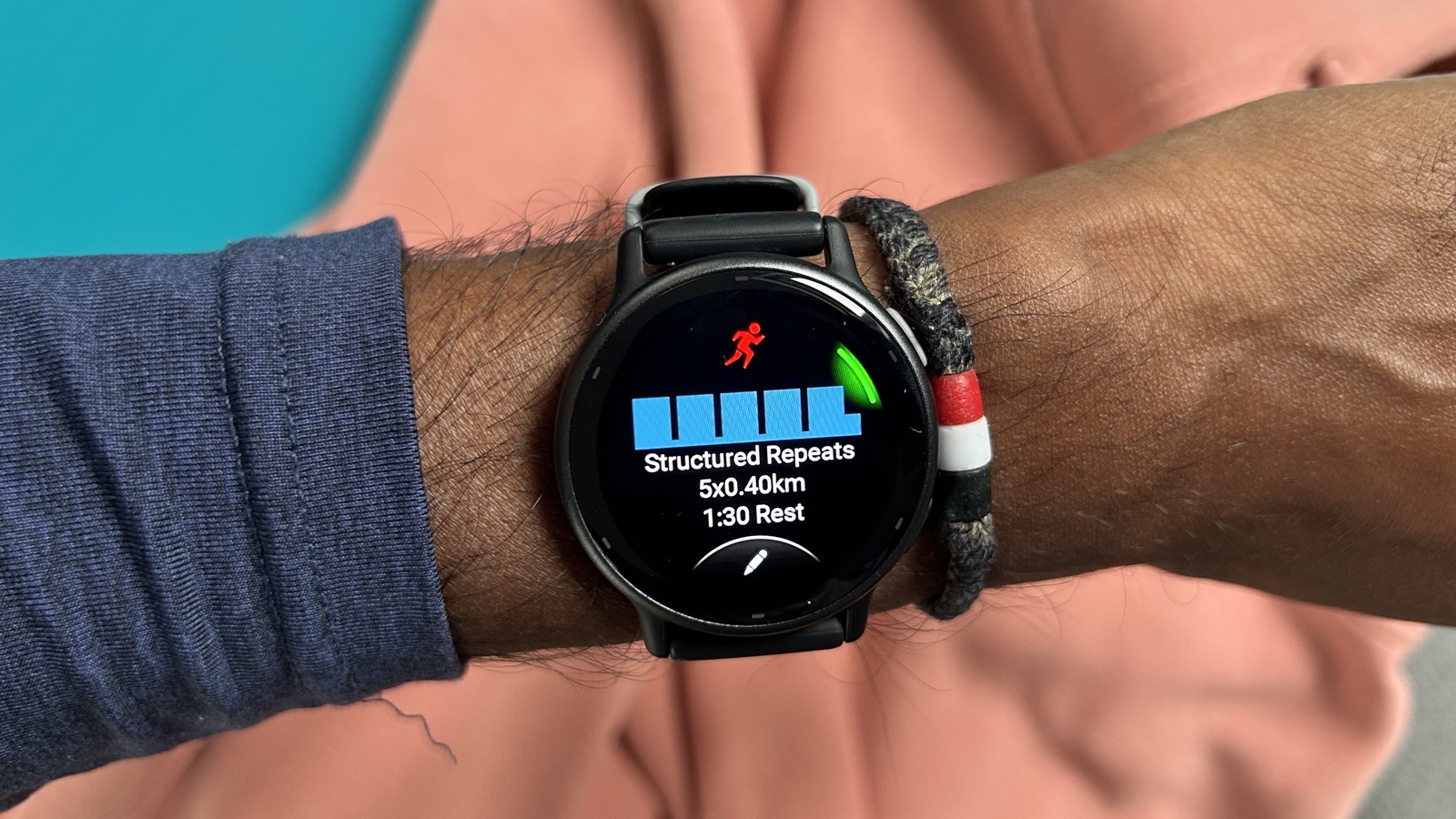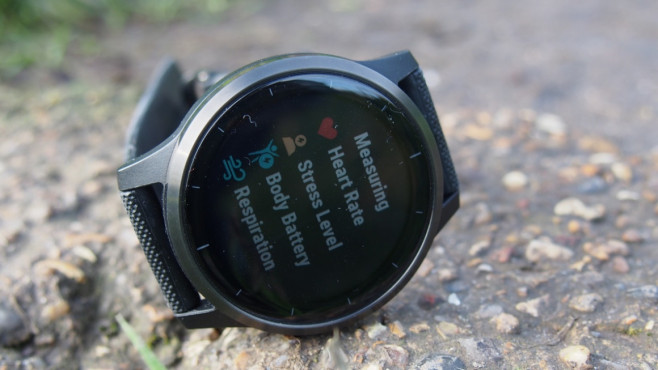
Four years on from the release of the Vivoactive 4, Garmin has surprisingly refreshed its long-running fitness watch line with the Vivoactive 5.
Despite being a set of watches the industry assumed had been replaced by the Venu series - and its most recent addition, the Venu 3 - the Vivoactive range is still alive and kicking.
But is the new Vivoactive 5 a good pickup, and what distinguishes it from the last generation?
Well, we've delved into all the details so you don't have to - below you'll find all the key differences between the pair, as well as our recommendation for all those considering an upgrade from the Vivoactive 4.
squirrel_12991925
Prices and versions
Wareable
Garmin Vivoactive 5 (above)
While the price of a new-gen model is invariably more expensive, the changes to Garmin's lineup we mentioned above appear to have had a significant effect on the asking price of the Vivoactive 5.
The older Vivoactive 4, launched around the same time as the original Venu, still retails for around $349.99 / £299.99. And though this can naturally be found sitting cheaper through third-party retailers, this isn't generally enough to see it fall below the Vivoactive 5's price tag.
The new model, instead, is available to pick up for $299.99 / £259.99.
The only real downside here is that you don't have the same case size options with the Vivoactive 5, whereas the last-gen device was twinned with a smaller Vivoactive 4S. This is also still available for around $349.99 / £299.99.
Design and display
Wareable
The AMOLED display is much improved over the Vivoactive 4
While it's actually quite difficult to detect the design differences between the Venu 3 and Vivoactive 5, they're much more apparent when looking at the Vivoactive 4 and Vivoactive 5.
The most noticeable is the display, with the Vivoactive 5 getting an AMOLED display.
It's much more vibrant and easier to view in all conditions than the Vivoactive 4's memory-in-pixel (MIP) screen, and this now actually represents the cheapest option in Garmin's range with AMOLED tech.
Wareable
While the Vivoactive 5's display is more premium, the case is less so.
The Vivoactive 4 features a bigger, 45mm stainless steel bezel and case, but Garmin reserves that design feature for the Venu lineup (and above) nowadays.
Instead, the Vivoactive 5's 42mm case uses an aluminum bezel and polymer case. That means it's around half the weight on the wrist, but isn't quite as luxurious.
Thankfully, the Vivoactive 5's smaller case doesn't have a significant effect on the display size and the 1.2-inch screen is only marginally smaller than the Vivoactive 4's, and offers much greater clarity.
Fitness features and tracking
Wareable
The tracking experience across the board is better on the Vivoactive 5 than the Vivoactive 4, though the two do still have similarities.
When comparing these Vivoactive models, it's important to know all the basics are still there: Garmin Coach, VO2 Max estimates, Pulse Ox readings, and sleep insights like Sleep Score, Body Battery, Stress Tracking and more.
Almost everything has been cranked up a notch with the updated model, though.
Body Battery now includes the personalized insights that debuted on the Venu 3, not just the basic elements of the feature found on the Vivoactive 4, and the same is true for the Sleep Coach feature.
This also applies to fitness and workout tracking. Workout Benefit is available on the Vivoactive 5, while the number of sports profiles has jumped from 20 to 30.
The optical heart rate sensor at the heart of tracking all this data is different, as well.
The Vivoactive 5 doesn't get the Elevate Gen 5 sensor from Garmin's latest top-of-the-line models, the Venu 3, Fenix 7 Pro and Epix Pro (Gen 2). But the Gen 4 Elevate sensor is still in line with the likes of the Forerunner 965 and Forerunner 265.
Crucially, it's superior to the Vivoactive 4's Elevate Gen 3, and there's a considerable difference from our testing between these two sensor arrays.
Smart features and operating system
Wareable
With smarts only really taking a step up when you progress to the Venu line, there aren't too many connected features to go around between these two devices.
Still, you get most of the basics. On either watch, you'll possess the ability to download and access music and podcasts from the likes of Spotify, as well as use Garmin Pay for contactless payments.
Notification support, weather reports, calendar syncing, and Find My Phone are all there, too.
Things only really split between these two in this area when it comes to text responses. If you're an Android owner with a Vivoactive 5, the ability to send responses via keyboard to incoming texts is present, and you'll also be able to view any photos within those texts.
This isn't the case on the Vivoactive 4, or those with an iPhone connected to their Vivoactive 5.
We've already mentioned how much of an upgrade the display's clarity is, but the OS Garmin uses for the majority of these new AMOLED models (including the Vivoactive 5) is superb.
Menus, notifications, and widgets are all quicker and easier to sift through than on the Vivoactive 4, and certain everyday features like Morning Report are included as a result. It all adds up to make the newer generation feel like a much smarter experience.
Battery life
Wareable
Despite the move to AMOLED dsplay tech, Garmin has worked wonders with battery life.
In smartwatch mode, the company suggests you'll receive up to 11 days with the Vivoactive 5 compared to around 8 days with the Vivoactive 4 (7 days for the Vivoactive 4S).
And if you're purely tracking with GPS, the Vivoactive 5 is once again the winner. It's able to last 21 hours compared to the 18 hours of the Vivoactive 4 (15 hours for the Vivoactive 4S).
Garmin's estimates are relatively reliable, but, still, stay tuned for our in-depth battery life testing of the Vivoactive 5 in our full review.
We expect part of reaching the 11-day estimate will be contingent on having the always-on display toggled off most of the time, in which case it'll actually sit much closer to the Vivoactive 4 range.
Which is best?
There's absolutely no question that the Vivoactive 5 is a better purchase than the Vivoactive 4, with the newer generation available for less while also offering more advanced features and a far superior design and OS.
While you still get plenty of the same core features by picking up the Vivoactive 4, and a more premium case design that comes in two sizes, the loftier asking price means there's no longer a sensible reason to pick the previous generation over any device in Garmin's range, let alone the Vivoactive 5.
How we test
